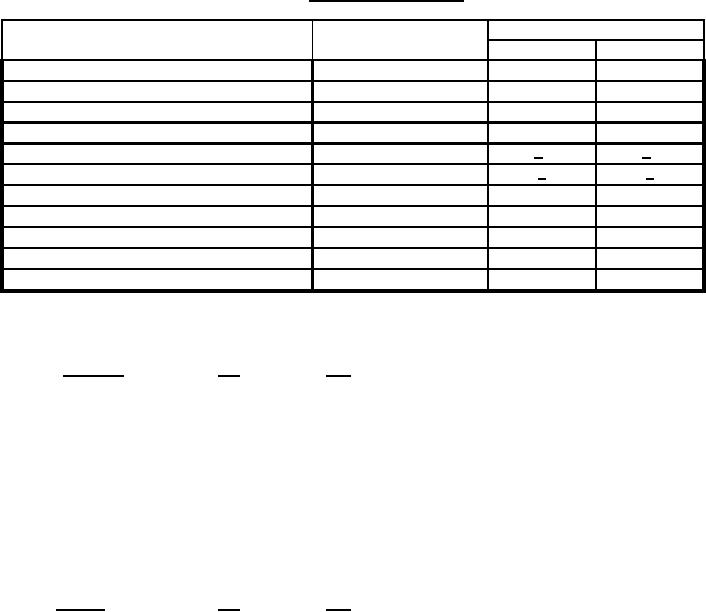
MIL-DTL-82901A(OS)
The NCO/OH ratio shall be calculated using the equivalent weights of materials obtained by chemical
analysis using the techniques of 4.6.1 of WS 22348, 4.5.2 of WS 16305, and 4.6.2 of WS 23148. To avoid
shelf life problems with component materials, this chemical analysis must be conducted at least every six
months on lots of materials being used. The weight percent of each ingredient shall be determined to two
significant figures (see 6.5).
TABLE I. PBXN-110 formulation.
Percent by Weight
Ingredient
Specification
Type I
Type II
1
1
HMX, Grade B, Class 3
MIL-DTL-45444
66.0
66.0
1
1
HMX, Grade B, Class 2
MIL-DTL-45444
22.0
22.0
2
2
Polybutadiene, linear, hydroxyl-terminated
WS 23148
5.378
5.365
2
2
Isodecyl pelargonate
AS 2328
5.378
5.365
3
4, 4'-Methylenebis(2,6-di-tert-butylphenol)
DOD-M-82730
0.05 + 0.005
0.05 + 0.005
Lecithin
MIL-L-3061
0.70 + 0.05
0.70 + 0.05
2
Polymethylene polyphenylisocyanate
WS 22348 Type I
0.494
--
2
Isophorone diisocyanate
WS 16305
--
0.510
4
Dibutyltin dilaurate (DBTDL)
DOD-D-82727
--
0.01
4
Ferric acetylacetonate (FeAA)
OS 9804
--
0.0015
4
Dibutyltin sulfide (DBTS)
WS 22349
--
0.10
1
The weight ratio of the HMX Class 3 to HMX Class 2 is nominally 3:1. To accommodate lot-to-lot variations
in the HMX classes (see 6.6), this weight percent ratio is allowed to vary from a minimum of 1:1 to a
maximum of 8.78:1. These ratios will result in the following minimum and maximum weight percentages:
Ingredient
Min.
Max.
HMX Class 3
44.0
79.0
HMX Class 2
9.0
44.0
in such a way that the total HMX content remains between 86 percent and 89 percent (see 3.3).
2
These are nominal values assigned to these component materials. The nominal composition of PBXN-110,
Type I and Type II, was derived using the values of the sample calculations (6.5.1) and the requirements of
3.3.2. Actual weight percents of these materials must be calculated in accordance with 3.3.2 using
experimentally determined equivalent weights.
3
Exception to DOD-M-82730: The maximum melting point requirement for 4,4'-Methylenebis(2,6-di-tert-
butylphenol) shall not apply.
4
Use either DBTDL, FeAA, or DBTS. The tolerances on the weight percent of the catalysts shall be:
Min.
Max.
Catalyst
DBTDL
0.002
0.02
FeAA
0.001
0.02
DBTS
0.03
0.30
3.4 Cured explosive requirements. The cured explosive shall meet the requirements of table II
when tested in accordance with section 4 (see 6.7).
4
For Parts Inquires submit RFQ to Parts Hangar, Inc.
© Copyright 2015 Integrated Publishing, Inc.
A Service Disabled Veteran Owned Small Business